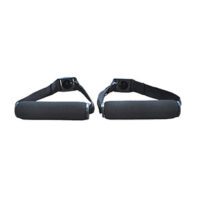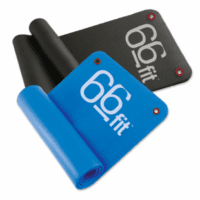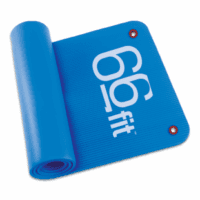Neurodynamics
Article by John Miller

What is Neurodynamics?
Introduction to Neurodynamics
Just like your joints and muscles, your nerve tissue requires the freedom to move without hindrance. When neural tissue gets impeded, it often results in pain or restricted nerve movement.
Understanding Neural Tension and Its Impact
Neural tension can lead to nerve pain and limit your movement. A physiotherapist trained in neurodynamics can effectively assess and identify the exact nerves affected and the location of the impediment.

How Can Physiotherapy Help?
Physiotherapy plays a crucial role in managing and alleviating nerve-related issues, especially those related to neural tension. This specialised form of care starts with a comprehensive evaluation by a physiotherapist, who assesses your movement, identifies restrictions, and pinpoints the sources of neural tension. The approach is highly individualised, catering to your specific needs and conditions.
After assessment, the physiotherapist employs a variety of techniques to treat the identified issues. These can include manual therapy, where hands-on techniques are used to mobilise and manipulate nerves and surrounding tissues. This approach helps in freeing up the nerve, allowing it to move more smoothly within its pathway.
Besides manual therapy, physiotherapists also utilise specific exercises and stretches designed to enhance neural mobility. These exercises are tailored to your unique situation and are aimed at gradually reducing nerve tension, improving flexibility, and enhancing overall nerve function. The goal is to restore movement, reduce pain, and prevent future issues.
Education and self-management strategies are also key components of physiotherapy. Physiotherapists provide advice on posture, ergonomics, and lifestyle modifications to help manage symptoms and prevent recurrence. This holistic approach ensures that you are not only relieved of your current symptoms but also equipped with the knowledge and tools to maintain nerve health in the long term.
In summary, physiotherapy for neural tension involves a multifaceted approach that includes assessment, hands-on treatment, exercises, modalities for pain relief, and education. This comprehensive care aims at not just addressing the immediate symptoms, but also at preventing future episodes, ensuring a return to full function and an improved quality of life.
Common Conditions Associated with Adverse Neural Tension
Conditions such as back pain, sciatica, hamstring and calf pain, neck and arm pain, shoulder pain, carpal tunnel syndrome, tennis elbow, and pinched nerves often develop adverse neural tension.
The Important Difference Between Neurodynamics and Nerve Stretches
Neurodynamics involves mobilising the nerve without actually stretching it, as excessive stretching can harm your nerves. Your physiotherapist will focus on treating the structure causing the impediment, thus restoring neural mobility and alleviating nerve pain.
Research Behind Neurodynamics
The neurodynamics or neuro mobilisation concept is originally based on the research by physiotherapists Michael Shacklock and David Butler. Over the past 20 years, further researchers such as Dr Michel Coppieters and Dr Alf Brief have added to the volume of scientific research supporting the hypothesis that your nerve tissue also requires full movement to remain for full pain-free function.
“Essentially, the entire nervous system is a continuous structure, and it moves and slides in the body as we move, and the movement is related to critical physiological processes such as blood flow to neurones. This movement is quite dramatic, and it is not hard to imagine that fluid such as blood in the nerve bed, a constricting scar, inflammation around the nerve or a nerve having to contend with arthritic changes or proximity to an unstable joint could have damaging effects, some of which could lead to pain.”
“Neurodynamics is an innovative management tool which involves conservative decompression of nerves, various neural mobilising techniques and patient education techniques. Neurodynamics offers a fresh understanding and management strategies for common syndromes such as plantar fasciitis, tennis elbow, nerve root disorders, carpal tunnel syndromes and spinal pain.”
“Neuro mobilisation is a method of conservative treatment of disorders of neural tissue. The rationale for using neuro mobilisation in treating musculoskeletal conditions is based on in vivo and in vitro studies that point to the high efficacy of neuro mobilisation procedures. Appropriate use of neuro mobilisation procedures depends on excellent knowledge of normal and pathological anatomy, differences between individual etiological factors, development of disease and symptom variability.” Michael Shacklock
Shacklock M (1995) Neurodynamics. Physiotherapy 81: 9-16. 2.
Shacklock M (2005) Clinical Neurodynamics: a new system of musculoskeletal treatment, Elsevier, Oxford, UK.
Neurodynamics Training Courses
Conclusion
Neurodynamics offers a fresh perspective on nerve-related disorders, providing innovative management strategies and relief from various conditions.
What to Do Next?
If you’re experiencing symptoms that might be related to neural tension, it’s crucial to seek professional advice from a physiotherapist. They can accurately assess your condition and offer tailored treatment to relieve your nerve pain.
Related Articles
- Manual Physiotherapy Techniques – This piece provides insights into joint mobilisation, manipulation, and soft tissue work, explaining the hands-on aspect of physiotherapy. It’s beneficial for those seeking to understand more about manual physiotherapy methods.
- Dry Needling – An Effective Physio Treatment Explained – The article discusses the benefits and applications of dry needling in rehabilitation, highlighting its effectiveness in pain management, improving joint mobility, and releasing myofascial trigger points.
- Physiotherapy & Exercise Prescription – This article emphasises the importance of tailored exercise regimens in physiotherapy. It discusses how physiotherapists use exercise physiology knowledge to craft personalised treatment plans.

















































































